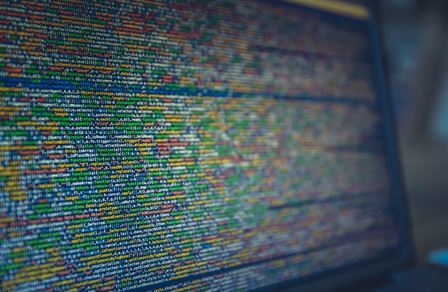How are they made how can a few wires and motherboards hold so much information? Where are the zeros and ones stored? Transistors will soon approach the size of an atom. Are they molecules? How then can they be made?

Answer
Hi Nelson, those are a lot of really good questions and will take some work to answer.
Indeed, a computer works by representing data as zeros and ones, then calculating and storing the results.
That storage of zeros and ones happens in many places in a computer, and there are many different systems for it. Before I explain that, I will first explain what is in a computer:
- CPU: English abbreviation for the computing unit. The CPU executes computer programs. To do this, a lot of calculations are done, such as addition, subtraction, reading data and writing data. For example, if a sum has to be made (1 + 4), the CPU is instructed to read in the 1 and the 4, then the CPU makes the sum (5) and writes this result. The data (the 1, 4, and 5) are represented in the computer as zeros and ones (I’m not going to explain how that happens), and the CPU reads and writes them into RAM.
- RAM: Another English abbreviation for a kind of memory that can store zeros and ones. There are a number of types, but with transistors you actually make a ‘memory cell’, a kind of very small electrical switch. When the switch is set to ‘on’ it will remember that there is a 1, if you turn it off it will be a zero. A problem with RAM is that the switch turns itself off after a while, and you don’t know whether there was a zero or a one. That’s why RAM needs to be powered all the time, so we can make sure they don’t forget whether they were on or off. When you turn off your computer, the RAM memory no longer receives power and therefore loses its zeros and ones. Therefore, it is only used as working memory for the CPU when the computer is on. But of course there are also data you don’t want to lose: you don’t want to lose your photos, programs and games every time you turn off your computer. That’s why there are other memories that don’t forget their contents when you turn them off, for example a hard disk and Flash memory.
- Flash memory: this is what’s in a USB stick. A computer can write files on a USB stick, then you can put it away (then it will not receive power but still know what it says), and then you can insert it again later and read the zeros and ones again. Flash memory works a bit like RAM but the electrical charge that represents one (the switch) is trapped here so that it does not disappear (there is a material around the switch that is not electrically conductive so that the charge cannot escape).
- Hard disk: it works in a completely different way, through magentism. There are disks in a hard disk and on those disks ones and zeros are written and read magnetically. Even if the hard disk does not receive power, the magnetic information is stored in it for a very long time (years).
- CD, DVD, Blu-Ray: Another common way to store zeros and ones is on a disc. That works differently: on such a disc there is a very long spiral (1 long line that starts in the middle and ends at the edge). Very small pits are burned on that long spiral (about 5 kilometers long on a CD, and much longer on a DVD and Blu-ray), so that the computer can know whether there are zeros or ones. Even without electricity, the pits remain in place, so you can also use those discs to store data for a long time, as long as you don’t make any scratches, of course, because then you make a lot of very strange pits yourself.
About the size of transistors: they are indeed getting smaller, and making memory cells with transistors is becoming more and more difficult. At the moment the very smallest transistors are still more than 10 atoms ‘thick’, but we are almost at the end of what is possible. These transistors are made in a ‘cleanroom’, such as at imec in Leuven (where they conduct research into increasingly smaller transistors). To make transistors you make very small layers of metal and other materials (a few atoms thick), and then you scratch off the bits you don’t want. That is indeed becoming more and more difficult, because those layers of metal become very thin, and you also have to scratch away very small pieces of material. Another difficulty is that the transistors themselves become so small that it becomes very difficult to make the switches.
If you want to know more about this, you can take a look at visits and camps that RVO society organizes (I have attached the link below).
Anyway, I hope this answers some of your questions!
Answered by
Prof. Roel Wuyts
Computer Science Programming Languages Object Oriented Analysis and Design
Kapeldreef 75 3001 Leuven
http://www.imec-int.com
.